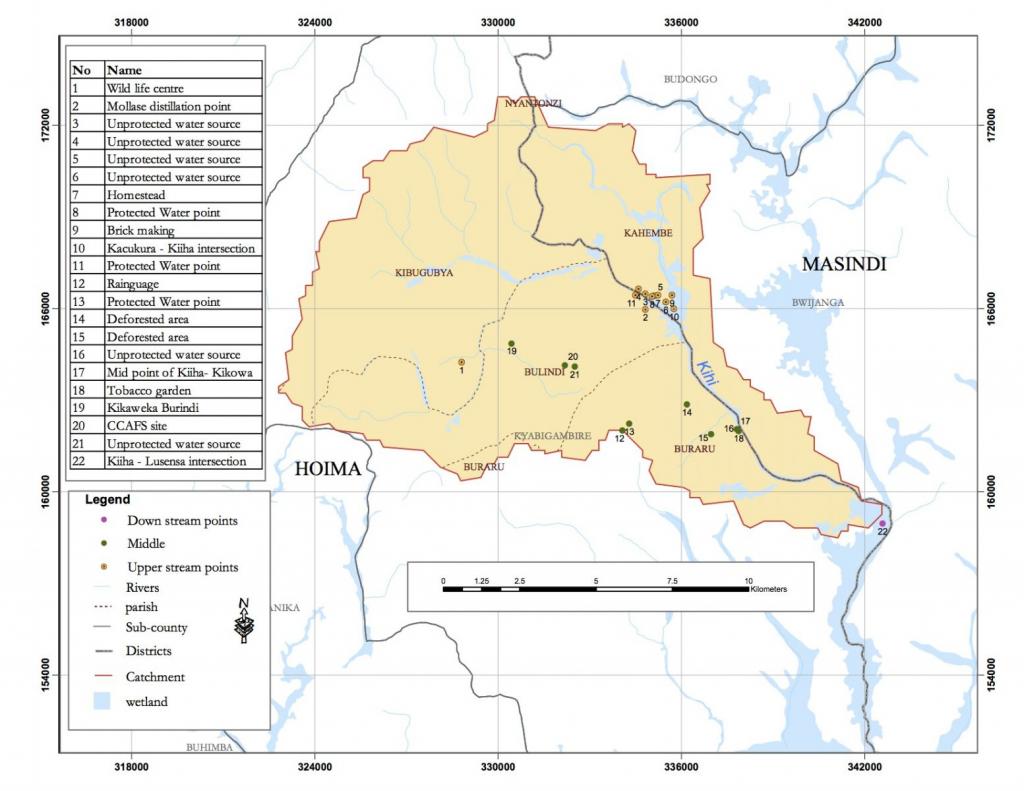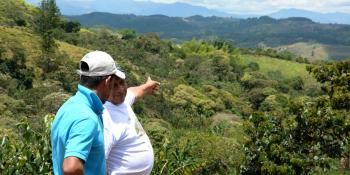Using social learning approaches to restore depleted water catchment in Uganda
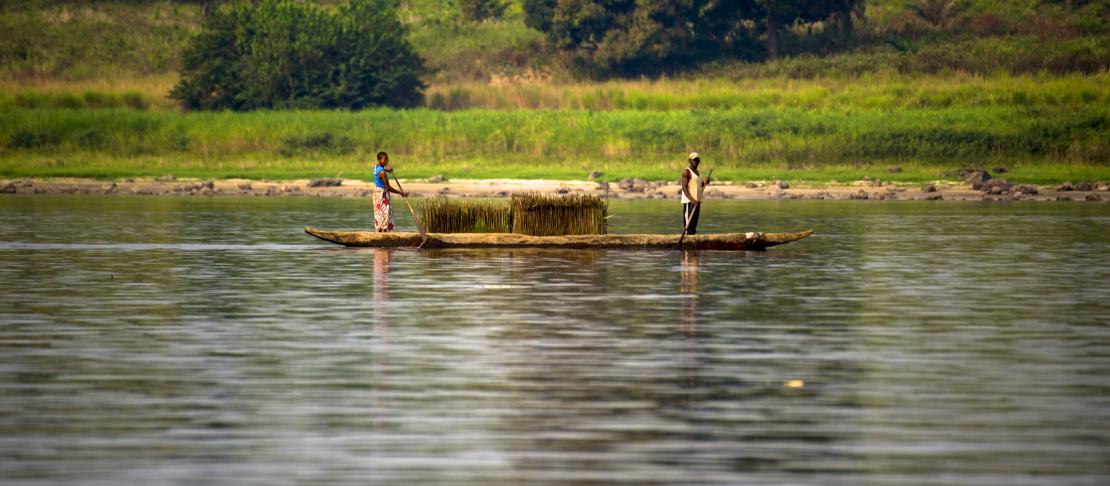
Working with local networks and social movements to roll out sustainable water management practices and climate-smart agriculture in the degraded Kiha water catchment.
Different communities share the transboundary river in Hoima and Masindi districts of the Albertine rift valley in Uganda. It is an important natural resource, providing water, fish, medicinal plants, construction materials and much more to the surrounding communities.
The water system is supporting the livelihoods of thousands of people, but the unsustainable use of its resources is leading to the catchment's rapid environmental deterioration.
Despite warning signs of depleting resources and land, local communities and authorities are paying little to no attention to sustainable management practices.
On top of that, the Kiha catchment is already experiencing climate change first hand. The changes are coming in the form of unreliable rains, strong and destructive winds, and outbreaks of pests and diseases, which limit crop productivity among the rural farming communities.
Map of Kiha water catchment:
(Click on the map to get a larger version)
These climate challenges, combined with continuous degradation, are severely affecting the functionality and cleanliness of the Kiha watershed.
Building a sustainable, climate-resilient future in the Hoima community
Given its central place in the area and the many benefits it brings, this particular water system can provide an incentive for the surrounding communities to come together and implement sustainable practices. It can also be seen as a building block to bring different and competing social groups closer together.
Several efforts to address these challenges have been initiated between Makerere University in Uganda, the CGIAR Research Program on Climate Change, Agriculture and Food Security (CCAFS), and local authorities in Hoima, to protect and conserve catchment resources.
The Hoima project links integrated watershed management tools with social learning approaches, as part of an effort to enhance the climate-adaptive capacity of the local communities.
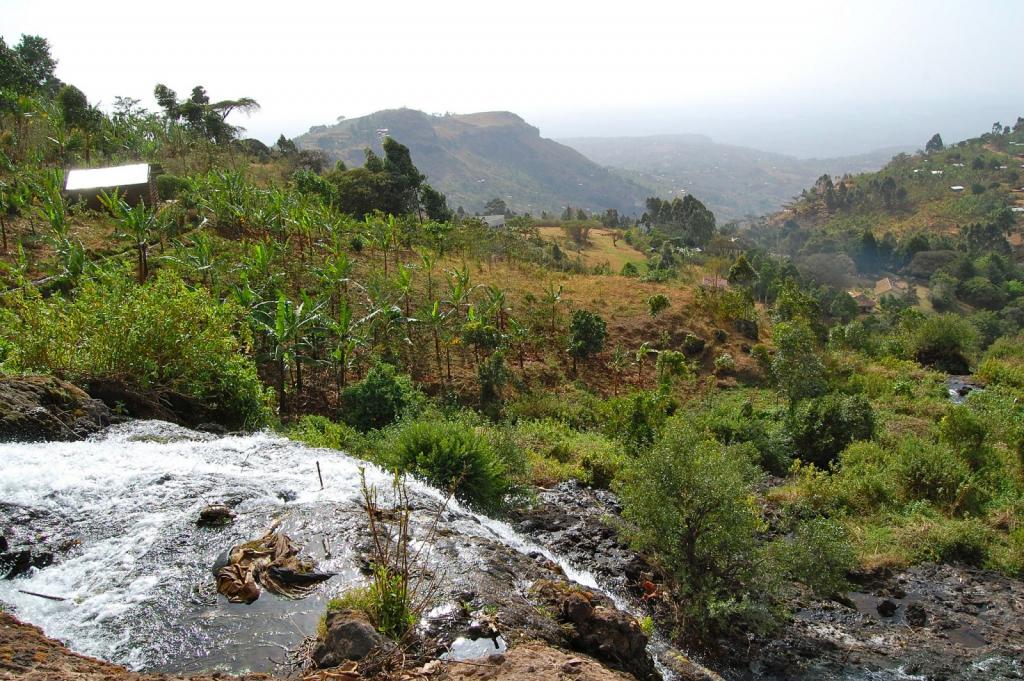
A Water catchment area in East Africa. the river system provides a number of resources and benefits. a depleted system will no longer be able to sustain communities and might lead to Emigration. Photo: Gloria
Social learning-type activities that have been held include various stakeholder meetings with community members, based on where in the stream they are located (up-, mid- or downstream). As a result of these meetings, people have, for the first time, reflected on some of the issues to do with use and management of the water catchment.
For participants, these meetings were "eye-openers" to the issues affecting the communities within the catchment area and how everyone was affecting each other with their behaviour. Other problems, for example alcohol production and consumption and linked abuse and poverty issues, were also discussed during the stakeholder meetings.
Local networks and groups to help with restore the catchment
Different approaches to help people form watershed catchment networks and social movements have been initiated through the Hoima watershed management project.
Supporting local community members to start campaigns that support the restoration of the catchment and to implement sustainable practices for conservation is a vital part of the work being done, as it builds on local ownership over the catchment.
These locally formed “collective-action approaches” are crucial to gain momentum for the catchment and achieve sustainable impact. Keeping these groups active is essential, and through continuous capacity building, information sharing and skills development, the project is set to make that happen.
Even if the project activities have only been going on for a short period of time, communities are already starting to show interest in putting their differences behind them and learn new skills, especially activities that can help them boost agriculture productivity, while contributing to sustainable restoration and conservation of natural resources.
The role of climate-smart agriculture in the project
The Hoima work acts like a local platform that disseminates information and training about technologies and innovations for improved soil and water management. This includes water-harvesting techniques that can help with climate adaptation and food security in the water catchment.
Climate-smart agriculture techniques are also being introduced, through on-farm trainings and demonstrations, as a way to enhance the adaptive capacity to climate change. Climate-smart agriculture is also an entry point for better natural resource management, as many practices involve planting trees on farm and using micro-fertilizers. Better and more effective use of land will also leave the catchment from being encroached further.
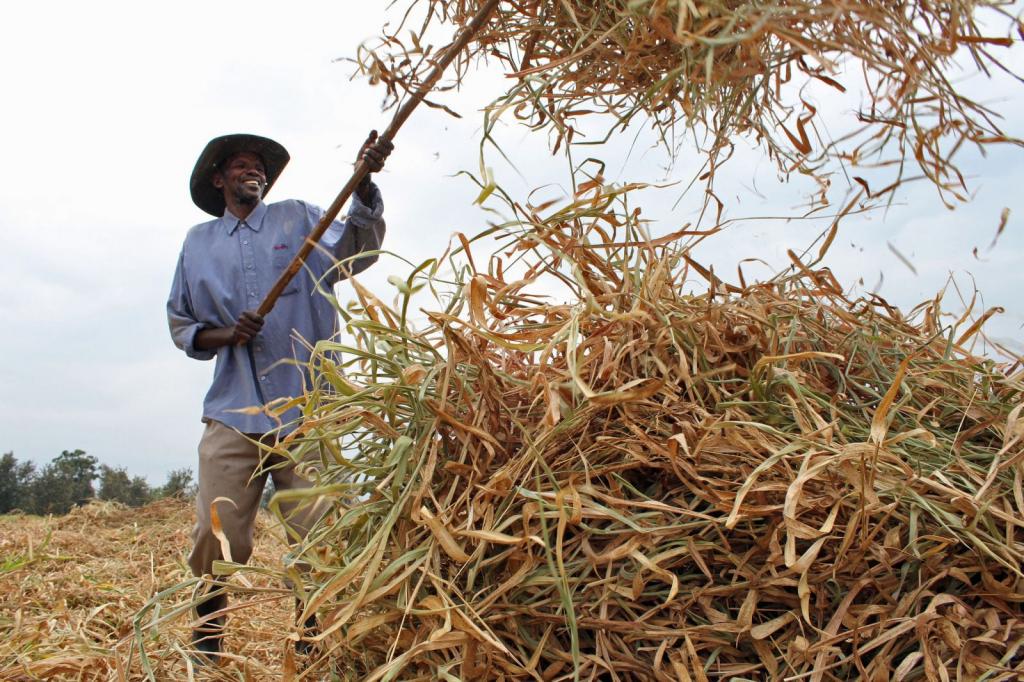
climate-smart agriculture practices are used as an entry point to improve the degraded kiha water catchmEnt in hoima, uganda. Photo: g. Smith (CIAT)
The project members are also teaching communities about resource management, flood control, water purification and waste treatment to keep families healthy. The project’s ambition is to increase community resilience and show how everyone and everything in the catchment area is interconnected and that actions affect other people. The activities are coupled with mitigation campaigns to make people aware of the linkages of climate change and greenhouse gas emissions.
Helping farmers boost yields without increasing greenhouse gas emissions is a positive step forward for the area.
Local context is important for success
Although a set of adaptation options are required to face the challenges posed by climate change, the implementation needs to keep the context in mind, which is addressing both farming and watershed management. This will help secure the livelihoods of the community members.
Ensuring sustainable use of natural resources using collective action approaches, such as soil, water and other resources, is crucial for strengthening capacity for climate change adaptation among the rural farming communities.
A look at how traditional, innovative sustainable practices, where collective group work takes center stage, can be combined with new technical, ecological, economical and socially sound conservation practices, will also take place in the upcoming months.
Learn more about the project's social learning approaches in this blog: Upstream in social learning process
The Hoima Watershed Management Project is one of the selected projects by the Climate Change and Social Learning Initiative, as a real-life social learning case study. Learn more: All lights on real-life social learning case studies.
Alex Zizinga works as a Project Assistant with the Hoima Watershed Management Project at Makerere University. Story edited by Cecilia Schubert, Communication Officer at CCAFS.

